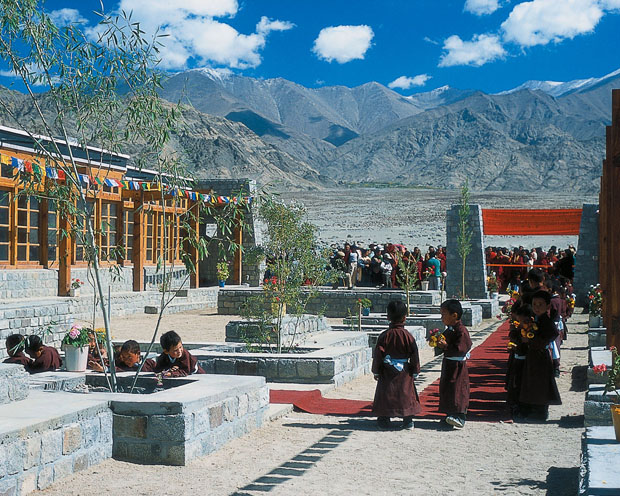What is ecological design? Human-nature Interaction.
Features of ¨green¨and ¨sustainable¨architectural design often emerge as solar panels, green roofs and other technologies that make up the checklist for LEED certification. But to identify features of ecological design is more complex.
Healthy ecosystems exist in a dynamic equilibrium of nutrient cycles and energy flows. To design ecologically is to consider the relationship between built structures and social structures as an evolving support system for environmentally responsible living. Ecological design does not only aim to produce low-impact architecture, but also works to support healthy relationships between culture and natural earth processes.
The word ecology is derived from the greek word Oikos, meaning home. Although we may have drastically changed the structure of our habitats over the course of our history, humans will always, fundamentally, belong to a larger, biotic family. Ecological design recognizes and reflects this truth in the form and function of built structures – allowing, even pushing, building users to interact with external, natural elements.
Architecture that encourages supportive, engaged interaction between building users and the natural cycles of the ¨exterior¨world exemplify the most basic of ecological design principles: acknowledgment that humans belong to and are dependent on – to put it simply – nature.
Arup’s design for the Druk White Lotus school combines sustainably managed local materials and traditional construction techniques with leading-edge environmental design. Solar strategy has played a particularly large role in how the campus was designed. A Trombe wall system in the residence buildings keeps users warm without relying on oil, gas, or electrical heating systems, acting as a special double layered window-wall that provides warm air exchange within the building. Flaps on the inner window/wall are opened to allow warm air from the solar-heated cavity to flood into the building. At night, the flaps are closed again, to keep the cool night temperature from entering. 
This Trombe wall-window heating/cooling system is operated, manually, by the students themselves, teaching a valuable lesson about how the sun – as a natural resource – is just as efficient as earth harming oil-burning systems used in most 21st century building designs. There is a lot of understanding required by building users – they must be able to operate the building themselves in order to get hot water and heat. In a place where old traditions have been carefully preserved, the buildings introduce new traditions for adaptation to 21st century life. These traditions, taught alongside the Ladahki-western school curriculum should, through cultural understanding, sustain themselves.
The holistic approach to designing the Druk White Lotus school is not only an example of sustainable building practises – Its focus on preserving both the culture and nature of the surrounding area make it a prime example of Ecological design.





[…] My last ecological design fundamentals post featured the Druk White Lotus School, set in the northern heights of ladakh, India. Arup engineers faced considerable climate challenges when designing the campus which, because of it’s 9,000-25,000 ft altitude, is very, very cold. However, because of its 9,ooo-25,000 ft altitude, it is also very, very sunny. The building´s design, which revolved around natural lighting and heating techniques for the local conditions, is another reason to consider the campus a prime example of ecological design. […]
[…] My last ecological design fundamentals post featured the Druk White Lotus School, set in the northern heights of ladakh, India. Arup engineers faced considerable climate challenges when designing the campus which, because of it’s 9,000-25,000 ft altitude, is very, very cold. However, because of its 9,ooo-25,000 ft altitude, it is also very, very sunny. The building´s design, which revolved around natural lighting and heating techniques for the local conditions, is another reason to consider the campus a prime example of ecological design. […]
[…] (originally published on ecosistemaurbano.org) […]